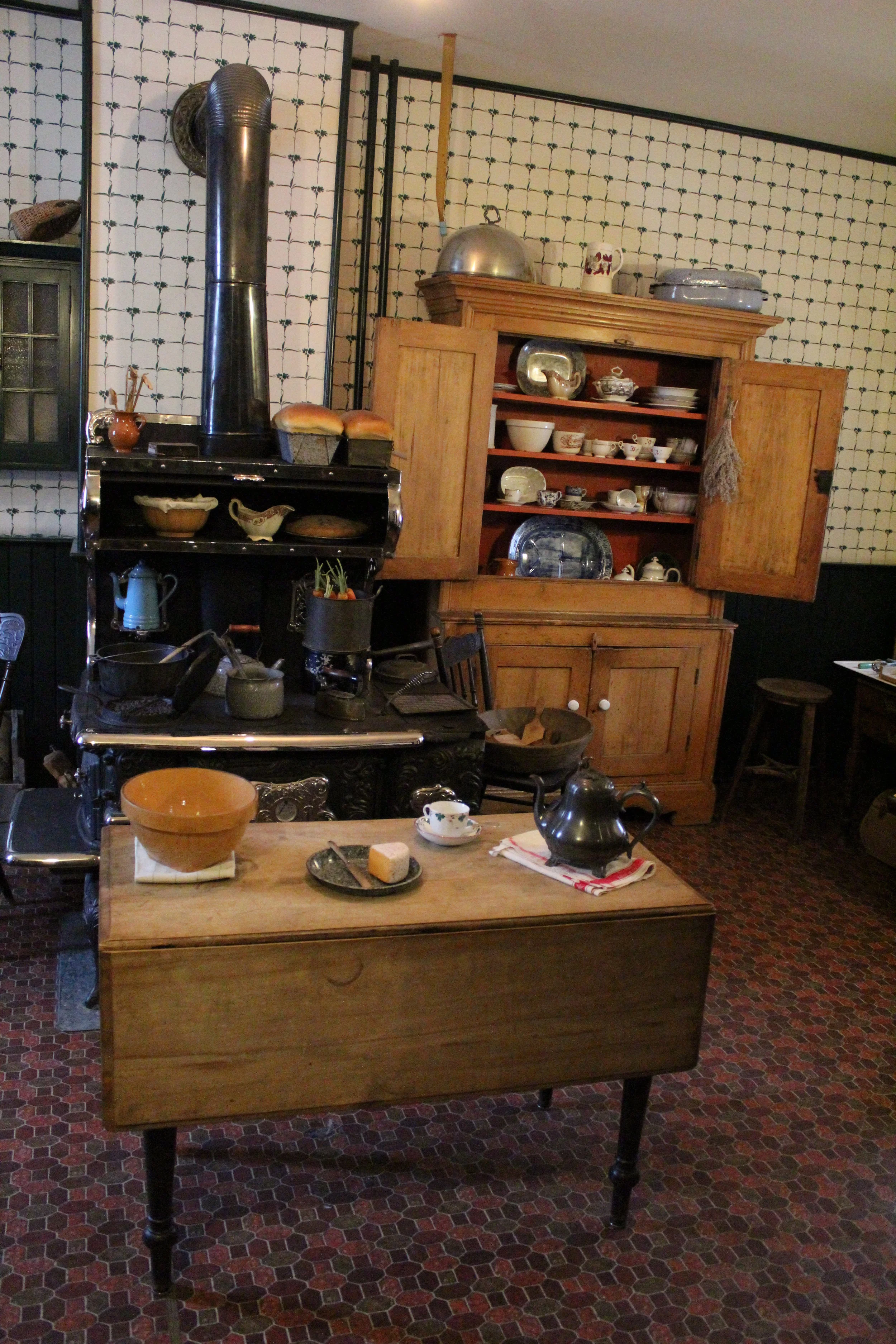“Ten Meals to Prepare”: The Women Who Laboured at Dalnavert
Ruth O. & Rammy S.
On 21 December 1895, The Winnipeg Tribune ran an article introducing its readers to the newly constructed mansion of Sir Hugh John Macdonald and his family. Titled “A Perfect Home,” the piece described the lavish interiors of Dalnavert in impressive detail. Perfect, too, were the “arrangements for carrying on the work of the house,” particularly the heating system, laundry facilities, and kitchen. When praising the upkeep of the house, the article focused on the rooms themselves, failing to acknowledge the individuals who laboured in them every day. In celebration of International Women’s Day, we want to talk about the hard work and service of the female cooks and maids that actually kept the Macdonald family home in working order.
When the Macdonald family moved in, they hired two women to live and serve at Dalnavert: the older, more experienced servant worked as the cook, while the younger served as the maid. While we know very little about the women who laboured at Dalnavert, we do know that one servant was named Mary Keith and that she moved into Roslyn Apartments with Lady Macdonald after the death of her husband. And we know that an earlier domestic servant had emigrated from Ireland. Most of the identities of the servants, though, remain buried in the past, along with their stories.
What we can do is speak to the labour of these women. We know they lived and worked in the servants’ quarters of the home. Working from the back of the house – divided by doors and tucked away servants’ staircases – the cook and maid navigated the mansion as a near-hidden labour force. They could easily work 13 or more hours a day from sunrise to sunset, labouring away at the endless chores of laundry, cooking, and cleaning.
Dalnavert’s kitchen, located at the opposite end of the house from the front entrance.
The steep, narrow servants’ staircase, leading from the kitchen to the second floor.
Holidays and special events were especially taxing. As one housekeeper wrote in the Winnipeg Tribune (December 28, 1896) regarding Christmas dinner,
Ten meals to prepare beforehand, and not sure where there will be sufficient scraps for tasty rissoles or shepherd’s pie for lunches. It is bad enough to go to bed with three meals on one’s mind, but when it comes to a dozen, the weight is appalling.
We also know that roughly 75% of women in the domestic service industry in Canada before the First World War came from the United Kingdom. Canada at this time had an immigration policy that drew in “suitable British single women, ages 17 to 35” (Library and Archives Canada). They were single because it was deemed not respectable for married women to labour for a wage—they were supposed to have their own households to manage.
E. Cora Hind (Source: Wikimedia Commons)
Perhaps to break away from the stereotypes of women’s work, Canadian women were moving away from domestic service—it did pay relatively well, but it was uninspiring work at a time when women were beginning to consider their own rights and independence. Women were seeking alternative occupations in industry and commerce. E. Cora Hind, for example, came to Winnipeg from Ontario in 1882 to seek work with The Manitoba Free Press as a journalist. After the company denied her a position, she learned to use a typewriter and went to work as Hugh John Macdonald’s secretary. In 1901, Hind was appointed as the agricultural editor of the Free Press, becoming the first female journalist in Western Canada. Yet even as a number of women sought employment in new industries, domestic service remained the main employer of female workers.
As household technology changed, so did the lives of female housekeepers across Canada. Many innovations made domestic labour less time-consuming, less taxing, and less dangerous. The Kitchen Queen stove, for instance, featured a temperature gauge that no longer required the cook to stick her hand in the oven to determine its heat levels. Another innovation was the Warren Rotary Knife Cleaner, which greatly reduced the labour of cleaning knives by hand. Then there was the electric Beattie washer, an innovation that eliminated the time-consuming work of manually washing clothes.
Kitchen Queen Stove temperature gauge, Dalnavert Museum
Electric Beattie washing machine, Dalnavert Museum
Warren’s Knife Cleaner, Dalnavert Museum
Even as these new machines eased the overall burden of work, they were sometimes seen as problematic in the hands of women. Some argued that these innovations would lead to female idleness due to their ease of use; one female education manual specifically warned against Rotary Knife Cleaners, claiming that their use would make women “inflexible and indifferent” housewives. There was, it seems, a perceived threat to the status quo, fearing what women would do if housework didn’t keep them preoccupied; they might read, enjoy a cup of tea, or fight for the right to vote! And then what would happen to men’s supper?
Today, household technology continues to reduce the demands of domestic labour. Many of us have dishwashers and washing machines to do the bulk of the work. But does the responsibility of maintaining a household still largely fall upon women? Who does the dishes or the laundry at your house?








